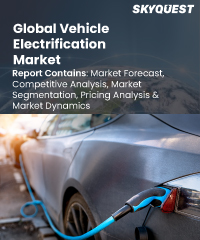
Report ID: SQMIG45J2173

Report ID:
SQMIG45J2173 |
Region:
Global |
Published Date: August, 2024
Pages:
197
|
Tables:
71 |
Figures:
75
Vehicle Electrification Market Drivers
Government Incentives and Regulations
Technological Advancements
Environmental Concerns and Sustainability
Environmental concerns and sustainability are increasingly becoming pivotal factors in the vehicle electrification market. As the global community becomes more aware of the environmental impact of traditional combustion engines, there is a growing push towards electric vehicles (EVs) as a cleaner alternative. The shift is driven by the need to reduce greenhouse gas emissions and mitigate climate change. Governments worldwide are implementing incentives and regulations to promote EVs, further fueling the market’s growth. Advancements in battery technology and charging infrastructure, along with rising fuel costs, are also contributing to the transition. Consumers are showing a heightened interest in electric and hybrid vehicles, recognizing the long-term benefits of sustainability and fuel efficiency.
Vehicle Electrification Market Restraints
Charging Infrastructure Challenges
Supply Chain Disruptions
High Initial Cost
The substantial upfront cost associated with electric vehicles (EVs) acts as a significant barrier to widespread adoption. This cost primarily stems from the expensive battery packs used in EVs. Factors contributing to this high expense include the use of rare metals (such as lithium, cobalt, nickel, and manganese) in battery production and the overall battery capacity. Additionally, EVs have higher manufacturing costs due to their more intricate chassis and body design compared to internal combustion engine vehicles. The need for additional electrical and electronic components, including electric motors, power electronics, and battery management systems, further adds to the overall cost.
Our industry expert will work with you to provide you with customized data in a short amount of time.
REQUEST FREE CUSTOMIZATIONWant to customize this report? This report can be personalized according to your needs. Our analysts and industry experts will work directly with you to understand your requirements and provide you with customized data in a short amount of time. We offer $1000 worth of FREE customization at the time of purchase.

Report ID: SQMIG45J2173